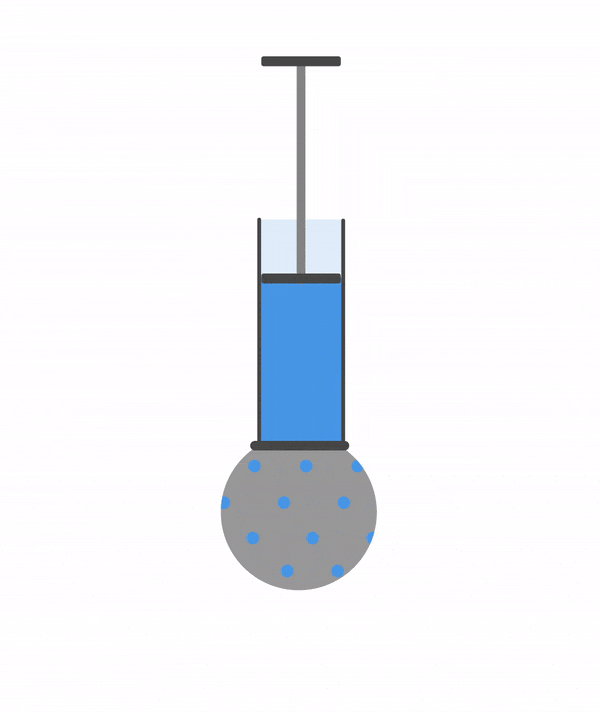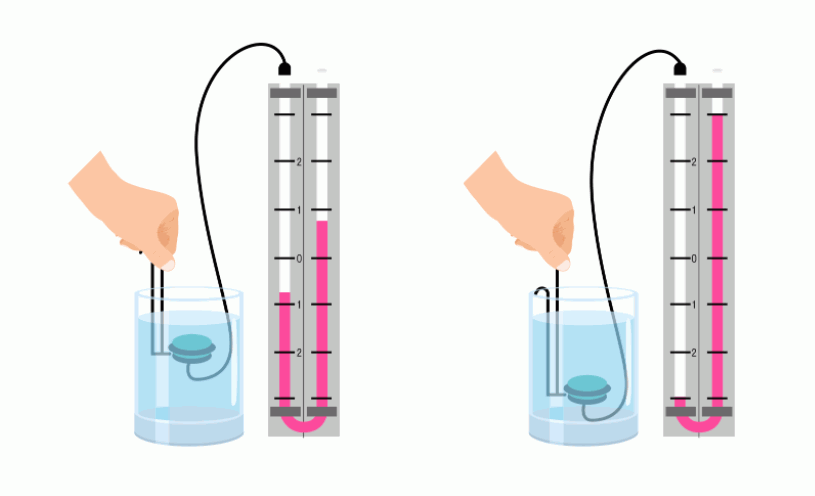
What is Pascal’s Law? Definition, Example & Application
Pascal's law
Blaise Pascal was a prolific scientist and invented a lot of things: take at least Pascal's triangle or the law of pressure for liquids and gasses.
Before we explain what is Pascal’s law? first you should know-
What is the pressure?
The amount of force exerted on an area per unit area is defined as "pressure".
It can also be defined as the ratio of the force to the area on which the force acts.
Pressure is the physical force applied to an object. The applied force is perpendicular to the surface of objects per unit area. The basic formula for pressure is force per unit area. The unit of pressure is Pascals (Pa). Besides, there are different types of pressure. You can see them in everyday life. Let's take a closer look.
Formula of Pressure
p = F / A
Where- p = pressure [Pa], F = force [N] and A = area [m2 ].
Definition of Pascal's Law
So, we come to the formulation of Pascal's law, and it sounds like this:
“The pressure applied to a liquid or gas is transmitted to any point equally in all directions.”
It is the basis of the operation of hydraulic machines, since a fluid can be used to transmit the change in pressure from one end to the other of a pipe and perform useful mechanical work, such as braking a car or lifting a large weight by applying a lesser force.
The French scientist Blaise Pascal was the first to observe this behavior of fluids. Pascal was a brilliant mathematician and a curious experimenter. He showed that the force exerted by a fluid on the container walls is perpendicular to them and that the pressure is the same at every point in the fluid.
Note- The law only works with liquids and gasses. The fact is that the molecules of liquid and gaseous substances under pressure behave quite differently from the molecules of solids.
If the molecules of liquid and gas move almost freely, then the molecules of solids cannot do that.
They can only fluctuate, deviating slightly from the starting position. It is thanks to the free movement of gas and liquid molecules that they exert pressure in all directions.
Let's consider the experiment with Pascal's ball to make it clearer.
Let's attach a hollow ball with many small holes to the pipe with a piston. Pour water into the ball and press on the piston. The pressure in the pipe will rise and water will pour out through the holes, and the pressure of all jets will be the same. The same result will be obtained if there is gas in the ball instead of water.

Fluid pressure
It follows from Pascal's law that since pressure is transmitted equally in all directions, the upper layers of the liquid press on the middle ones, the middle ones - on the lower ones, and the lower ones - on the bottom of the vessel.
The pressure inside the liquid at the same level is the same in all directions. The pressure increases with depth .
This statement is verified using a manometer - a pressure measuring device. The deeper we measure the pressure, the greater the reading.

Liquid column pressure
p = ρgh
Where- ρ - density [kg / m3 ]
h - liquid column height [m]
g - acceleration of gravity [m / s2 ]
On Earth, g = 9.8 m / s2
Applications of Pascal’s law
Pascal's principle has been used to build numerous devices that multiply force and facilitate tasks such as lifting weights, stamping on metal, or pressing objects. Among them are:
- Hydraulic press
- The braking system of automobiles
- Mechanical shovels and mechanical arms
- Hydraulic jack
- Cranes and elevators
Examples of Pascal’s law -
For example, every time the tube is squeezed to release toothpaste, Pascal's principle kicks in. And the mechanism by which the dentist's chair is raised as well.
The same applies when the car's brakes are pressed. Broadly speaking, when the brake pedal is depressed, a force is exerted on a small plunger, which is transmitted through the liquid that fills a pipe, creating a pressure there. At the other end of the pipe, which is also responsible for properly directing the force, there are two pistons that amplify it to actuate the wheel jaws. This slows down its turn and the car brakes.
In first aid, the Heimlich maneuver is another application of Pascal's principle capable of saving the lives of people who have small objects stuck in their throats. It is practiced by applying strong pressure to the person's abdomen to expel the stuck object.
The hydraulic lift is another example of Pascal’s law. It is a pipe provided with pistons of different areas that is filled with hydraulic fluid. By applying a small force F to the inlet piston, which has a smaller area, you can multiply the force in the larger piston at the outlet and lift a heavy object such as a car with it.
Related Articales
Recently Posted
-
भगवान गौतम बुद्ध जीवन परिचय | Gautam Buddha in Hindi
December 15, 2022. -
कार्बन के अपररूप Allotropes of Carbon in Hindi
November 5, 2022. -
मिश्र धातु किसे कहते हैं? उपयोग, नाम, गुण Alloy in Hindi
July 27, 2022. -
गलनांक किसे कहते हैं? परिभाषा, उदाहरण Melting Point in Hindi
July 20, 2022. -
परिमाप किसे कहते हैं? Perimeter in Hindi
July 19, 2022.




